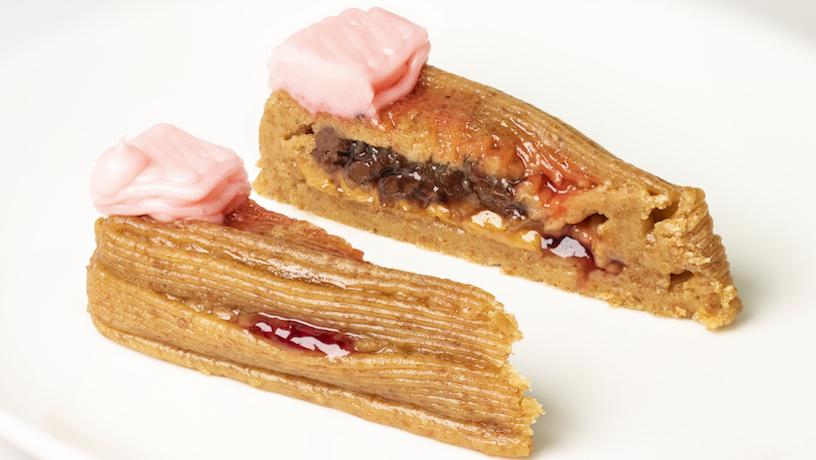 3D Printed Cheesecake. Credit: Jonathan Blutinger/ Columbia Engineering
3D Printed Cheesecake. Credit: Jonathan Blutinger/ Columbia EngineeringResearchers have pushed the boundaries of 3D printing into the culinary world by using technology to create an edible slice of cheesecake.
The team, whose findings were published in the journal NPJ Science of Food, used a 3D printer to make the layered dessert. The recipe used seven ingredients: graham cracker paste, peanut butter, strawberry jam, Nutella, banana puree, cherry drizzle, and frosting.
The cake was made by squeezing each element out of a syringe in thin lines. While the graham cracker paste made up more than 70% of the dessert, the team noted that the layering of the ingredients resulted in flavors hitting the palate in different waves.
Jonathan Blutinger, a mechanical engineer at Columbia University and the first author of the study said, “when you bite into it, you kind of feel the flavors hit you in different waves.” He further said, “I think that’s a function of the layering inside of the actual structure.”
Process Behind the 3D-Printed Cheesecake
The New York City researchers shopped at a neighborhood corner store to get the necessary ingredients for their experiment. They used a food processor to combine water, butter, and graham crackers to generate the paste, and then they mashed bananas to create a puree for the recipe.
The early iterations of the cake included a smaller amount of graham cracker paste, but as soon as wetter components were added, they immediately fell apart.
To combat this, the team created wells from the drier ingredients, with thicker walls on the bottom and thinner walls on top, and deposited the wetter ingredients inside. The slices maintained their structural integrity and were finished by browning the top graham cracker layer with a blue laser.
3D-Printing Technology in the Culinary World
While the 3D-printed cheesecake is not the first attempt at 3D-printed food, it is a unique example of the technology being used in the culinary world. NASA has investigated 3D-printed food for astronauts to eat on long space trips, and one company is working on 3D-printed plant-based meat. A pop-up restaurant has also offered 3D-printed meals.
Scientists at #ColumbiaUniversity in the USA create world's first 3D-PRINTED #cheesecake 😲
The vegan dessert was completed in 30 minutes, compared to four hours & used just seven ingredients but really doesn’t look very appealing. 🥴 pic.twitter.com/TClchwxHcO
— Mr Pål Christiansen 🇳🇴😍🇬🇧 (@TheNorskaPaul) March 25, 2023
Blutinger also said, “the cheesecake is the best thing we can showcase right now, but the printer can do a whole lot more.” He continued, “we can print chicken, beef, vegetables, and cheese. Anything that can be turned into a paste, liquid, or powder.”
The researchers feel that there is room for 3D printing in meal planning and that it has the potential to improve food safety by lowering the amount of human contact it receives. In the not-too-distant future, individuals may be able to purchase 3D printers for cooking in the comfort of their own homes. However, the price may be as high as $1,500, and the printers will need certain recipes in order to operate properly.

 1 year ago
67
1 year ago
67











 English (US)
English (US)